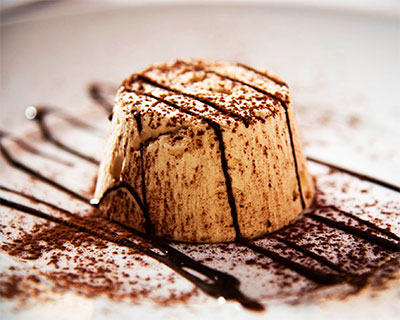Here are some more popular Italian food terms for your interest. We hope they provide some insight, and possibly even help you on your travels.
Insaporire
insaporire: To sauté meat, vegetable or other food in a soffrito to allow it to absorb its aromatic flavours.
Mantecare
mantecare: To beat, whip or simply stir vigorously to achieve a smooth, creamy consistency. It is the finishing step in making risotto, whereby you add parmesan, and/or butter or oil to the cooked rice, usually off heat, and stir vigorously to incorporate the ingredients and produce a creamy texture.
Minestra
Minestra is a soup.
Minestrone
Minestrone literally means ‘big minestra’ or just ‘big soup’, this well-known term refers to a category of mixed vegetable soups, generally very thick and hearty.
We have a recipe for Minestrone della nona on Kitchen Geekery which you might love.
Odori
Odori is similar to its English meaning of ‘scents’ (or odours). Odori is the collective name for the herbs and vegetables that go into a battuto (onion, carrot, celery, garlic and parsley).
Pasta all’uovo
Pasta all’uovo is the term for fresh egg pasta, typically made from a dough of soft flour known in Italy as “OO” and whole eggs.
Egg pastas are often made fresh at home, in which case they are also known as pasta fatta in casa (home-made pasta) or pasta fatta a mano (hand-made pasta) or pasta fresca.
Pasta asciutta
Pasta asciutta: Literally, ‘dry pasta’, confusingly it refers to a pasta dressed with sauce.
Pasta fresca
Probably one you could correctly guess, but pasta fresca means freshly made pasta.
Pasta secca
Pasta secca also means ‘dry pasta’, but this refers to your typical store-bought pasta made from durum wheat and water.
We have a recipe for pasta alla norma which uses dry store-bought pasta.
Peperoncino
Peperoncino: a small, dried hot red pepper used often in central and southern Italian cooking. A common substitute in many dishes is chilli flakes.
Primo piatto / primo
Primo piatto or primo refers to the first course of a typical Italian meal, primo is usually pasta, risotto or soup.
Piatto unico
Piatto unico is dish that can serve as both primo (first course) and second (second course) or quite simply a one-dish meal.
Quanto basta
Quanto basta literally, ‘as much as is enough’, a common term used in Italian recipes to mean an undetermined amount like ‘more or less’, ‘to taste’ where the cook decides the amount needed to achieve the desired result.
Ragù
Ragù, a long-simmering tomato-based sauce, typically made with meat.
Two of the most famous are; ragù alla bolognese, a dish made with minced beef, or a mixture of minced beef and pork, and ragù alla napoletana which is a ragù made with a single piece of beef chuck.
We have recipes for a ragout with lumaconi and another for spaghetti with a red mullet ragout.
Ribollita
Ribollita is a Tuscan soup that always includes some type of leftover bread, beans and an array of vegetables. The literal translation of this word is reboiled.
Rosolare
Rosolare is to lightly sauté in oil or butter, especially a soffrito, over low heat so that the food softens rather than caramelises.
Secondo piatto / secondo
Secondo piatto or simply secondo refers to the second course of an everyday Italian meal, which is usually meat or fish but can sometimes be a vegetable dish.
Semifreddo
Semifreddo is a frozen dessert, usually, ice cream, sometimes accompanied by cake.

Soffritto
soffritto: A battuto of aromatic vegetables, most typically onion, carrot and celery, sauteed in oil and/or butter to bring out its flavours and used as the base for countless sauces, soups and stews.
Spaghettata
A spur of the moment meal or snack made from a quickly made pasta dish, often late at a night.
Perhaps the most typical dish for a spaghettata is aglio, olio e peperoncino.
Spianatoia
A spianatoia is a wooden board upon which fresh pasta is made.
Stuzzichini
Stuzzichini is used to describe small snacks.
Sugo
Sugo is a common term to describe a tomato-based sauce for pasta. Ragù is a popular example of a sugo.
Trifolati
trifolati: Term to describe a simple technique of sautéing a vegetable—most typically mushrooms—in garlic and oil, then seasoning with salt, pepper and finely chopped parsley. The term literally means ‘truffled’ because the thinly sliced mushroom made this way is said to look and taste like that elegant tuber.
Vellutata
A soup generally made from puréed vegetables such as the vellutata di cavolfiore (Cream of Cauliflower Soup) very similar in usage to crema.
Zuppa
Zuppa is another one of the many words for soup in Italian. It refers rustic soups which are typically meant to be eaten with bread, either for dunking or laid on the bottom of the bowl.